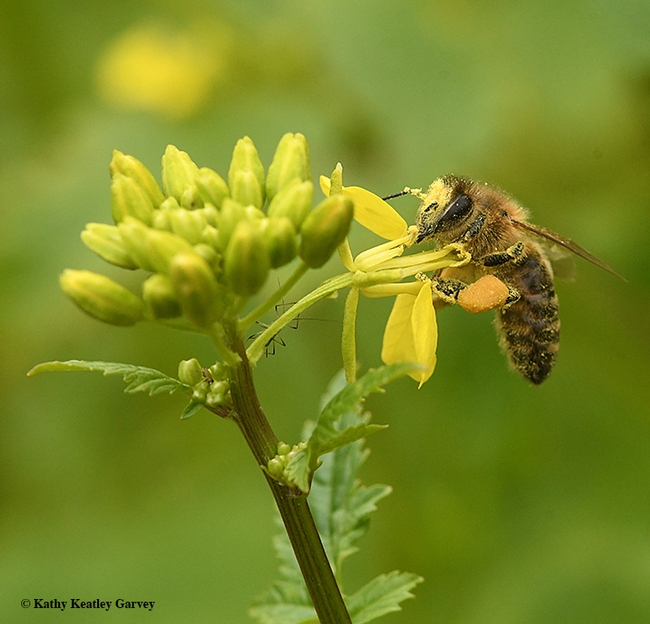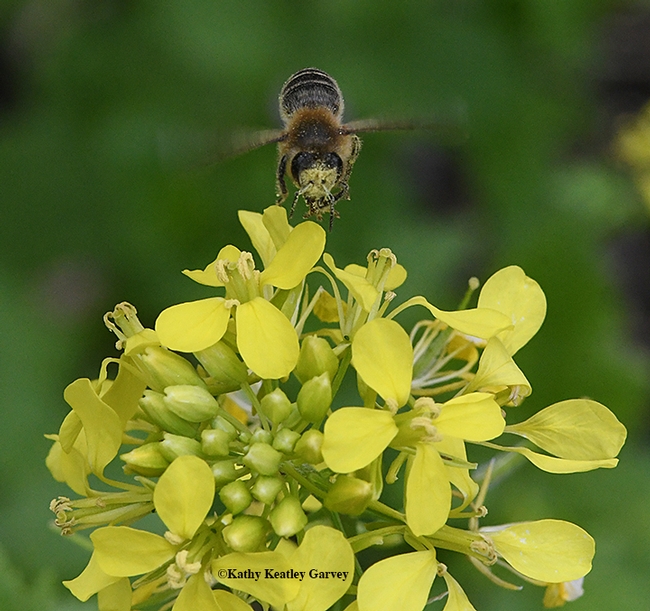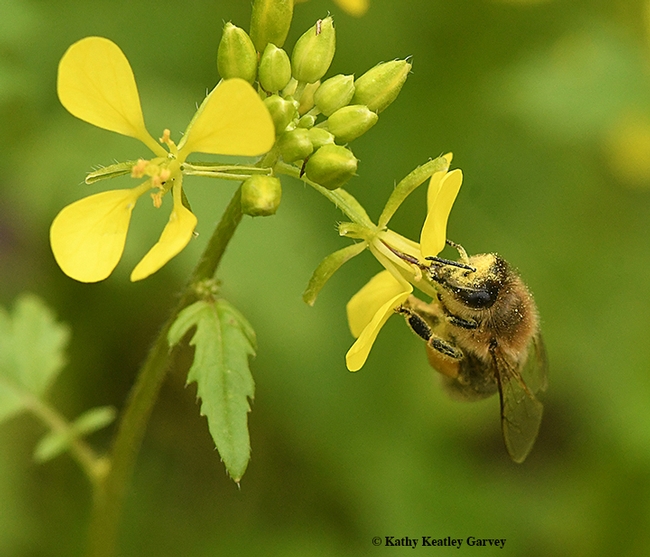- Author: Kathy Keatley Garvey
As National Pollinator Month winds down, let's visit a "morning" carpenter bee and an evening primrose.
The evening primrose, Oenothera biennis, native to the Americas, is unique in that it blooms as night (as its name implies) and dies back at noon.
Early in the morning on June 25, we spotted a female Valley carpenter bee, Xylocopa sonorina, heading over to an evening primrose. This four-petaled yellow flower, is lemon-scented. Simply spectacular!
Our carpenter bee, already dusted with yellow, made a bee-line for some more nectar and pollen. The yellow pollen resembled gold dust on a miner.
"Over the centuries, indigenous people in North America have used the plant as food and traditional medicine," according to Wikipedia. "The seeds of the plant are important food for birds, including American goldfinch, Northern bobwhite, and mourning dove, and it is a larval host for both the primrose moth and the white-lined sphinx moth. Bumblebees and honeybees also visit the flowers."
So do carpenter bees! (And syrphid flies and more!)
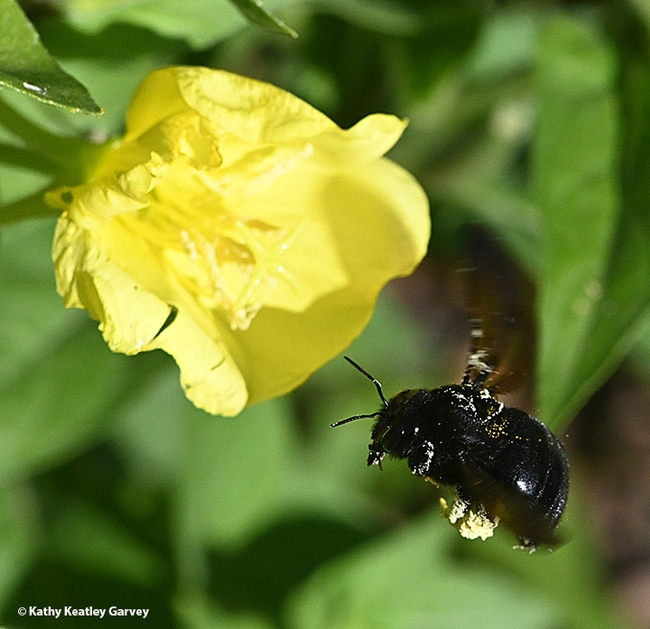
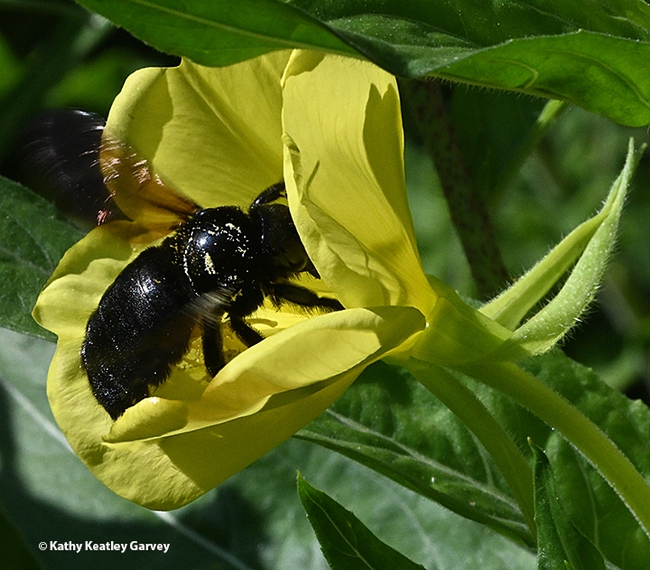
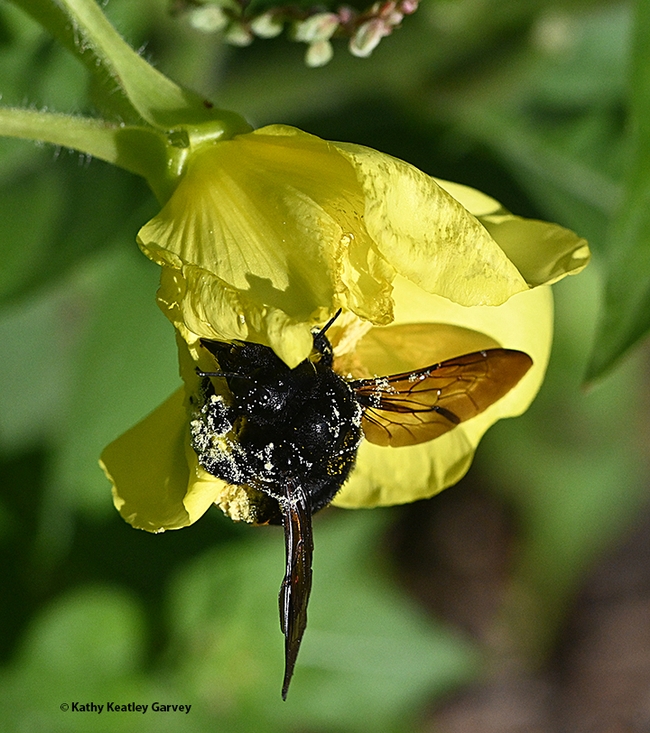
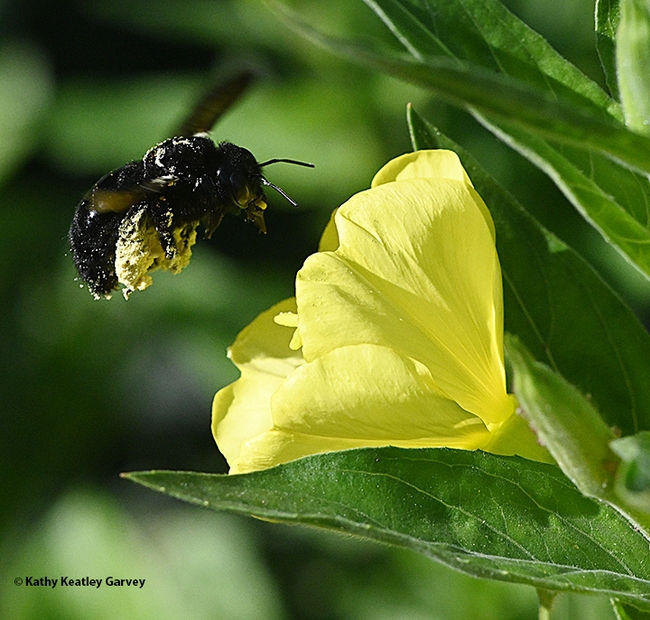
- Author: Kathy Keatley Garvey
The phrase "can't cut the mustard" (not able to handle the job) doesn't apply to honey bees. It's spring and honey bees are emerging en force from their hives to collect nectar and pollen to feed their colonies.
The fields are awash with mustard.
By the way, O. Henry, in his collection of short stories, The Heart of the West, was apparently the first known person to use the phrase, "Cut the mustard." He wrote: "I looked around and found a proposition that exactly cut the mustard."
Today we hear the more negative version, "can't cut the mustard."
Meanwhile, it's a joy to see a bee swathed in gold dust from the mustard. In doing so, our bee is akin to the kid with a milk mustache. Life is good!
"The importance of pollen to the health and vigor of the honey bee colony cannot be overstated," UC Davis emeritus professor and retired bee wrangler Norman Gary writes in the newly published second edition of his book, The Honey Bee Hobbyist: The Care and Keeping of Bees. "Bees need a balanced diet. Honey satisfies the bees' carbohydrate requirements, while all of the other nutrients--minerals, proteins, vitamins and fatty substances--are derived from pollen. Nurse bees consume large amounts of pollen, converting it into nutritious secretions that are fed to developing larvae. During an entire year a typical bee colony gathers and consumes around 71 pounds (35 kg) of pollen."
The next time you see honey bees collecting pollen, think of a colony gathering 71 pounds of pollen a year!
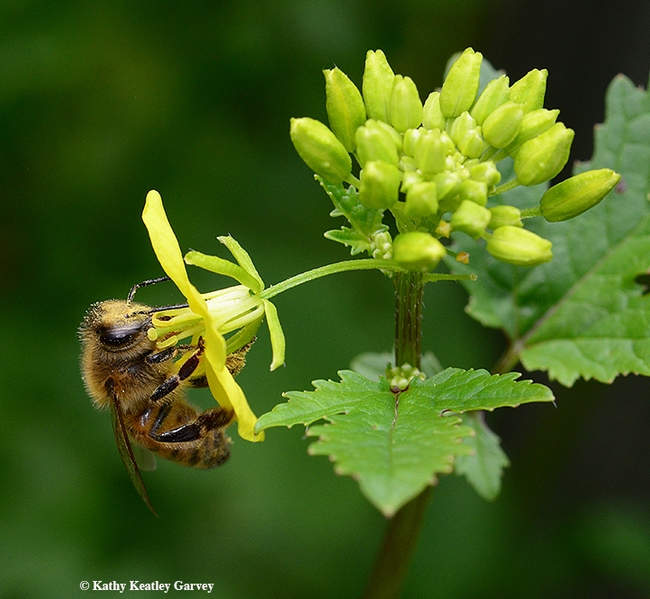
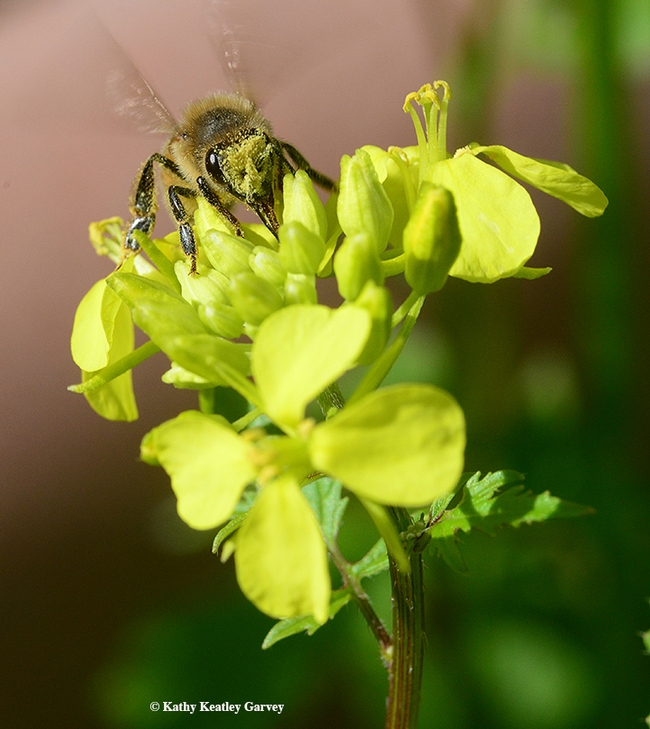
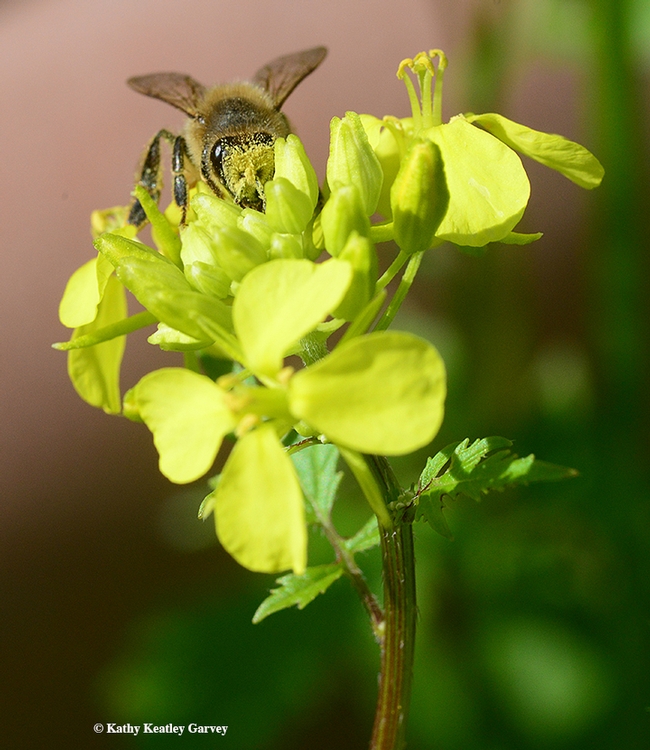
- Author: Kathy Keatley Garvey
A sure sign of spring: honey bees foraging on mustard.
You'll see mustard growing as cover crops in the Napa Valley and Sonoma Valley vineyards, but you'll also see it gracing the hillsides, roadways and area gardens.
It's a time when the yellow pollen dusts the bees from head to thorax to abdomen. Sometimes you'll see a bee's head absolutely covered with the "gold dust."
According to this Sonoma County website:
"Whether it's growing wild or planted by thoughtful vineyard managers, mustard is more than just a feast for the eyes, it's a feast for the vines. It thrives just until bud break, when it is turned under to mulch and provide valuable nutrients and phosphorus to the emerging grape plants."
"The practice holds deep roots in Wine Country. According to legend, a Franciscan missionary first spread the mustard seed while landscaping church properties throughout California. Planting was simple – these early world gardeners carried the mustard seeds in a sack slung over their backs, and each sack had a small hole in it, so as they walked, the seeds would scatter."
Indeed, mustard is not only a feast for the eyes. The mustard plant, from the family Brassicaceae, provides us with
- Spices
- The condiment known as mustard (seeds are ground and mixed with water, vinegar and other ingredients); and
- Mustard greens (the leaves are edible and perfect for a salad).
And it's a feast for bees!
